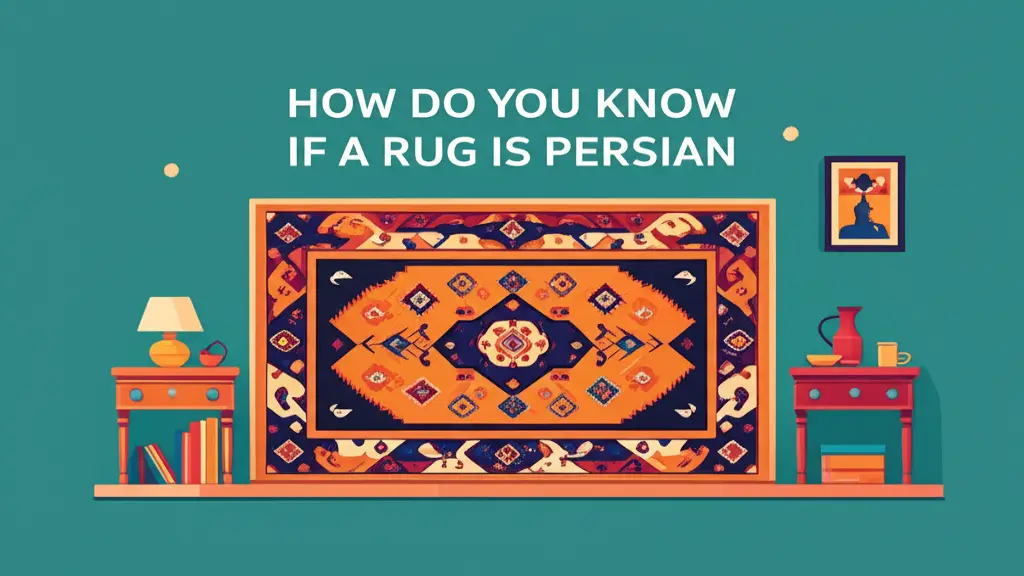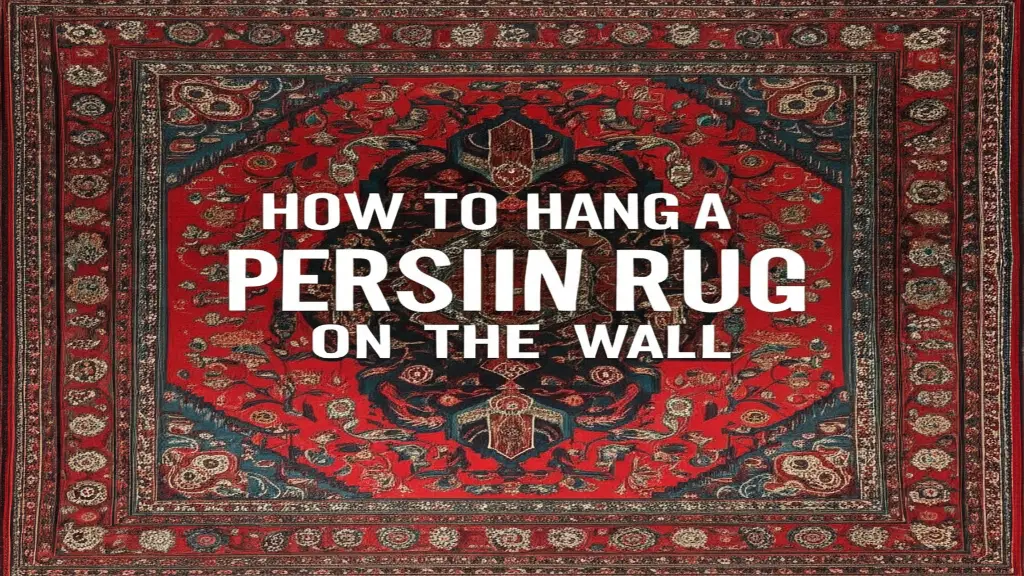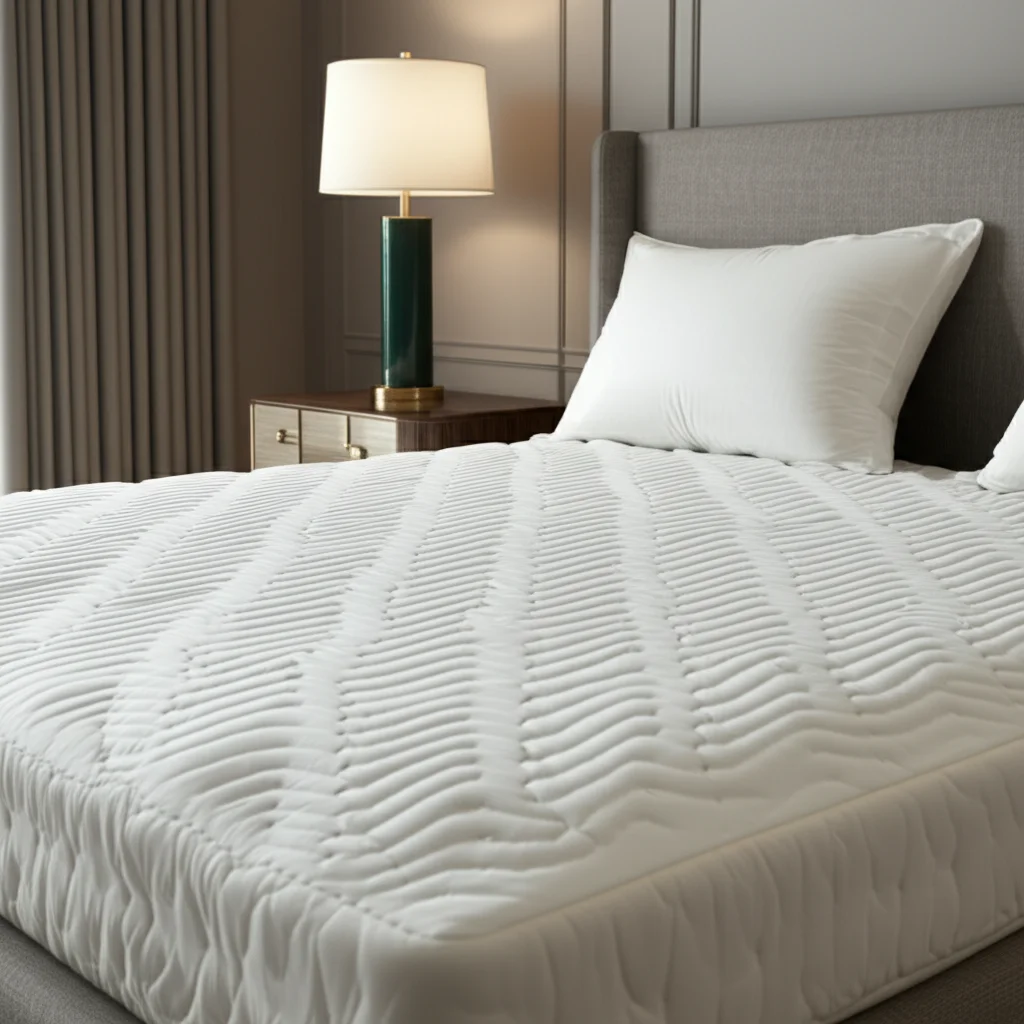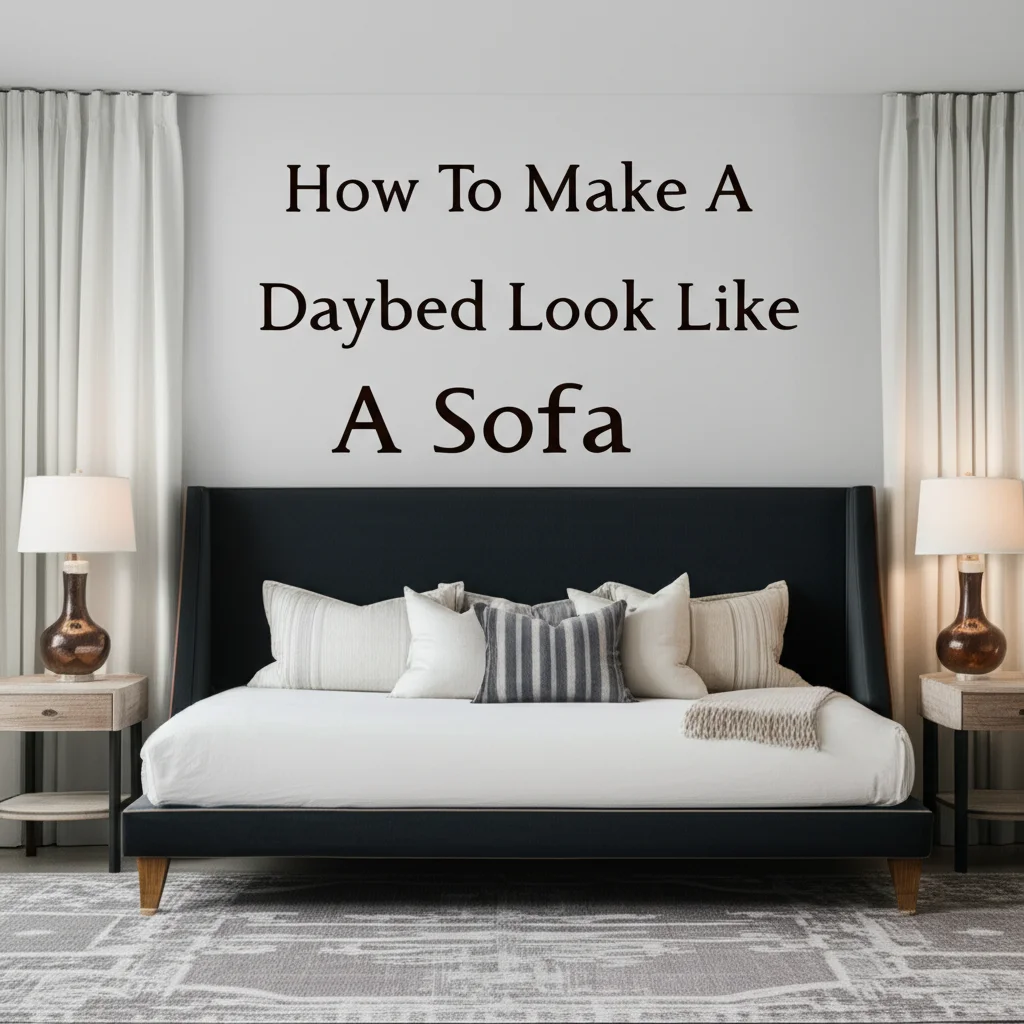· Todd Martin · Home Decor · 16 min read
What Are The Different Types Of Persian Rugs
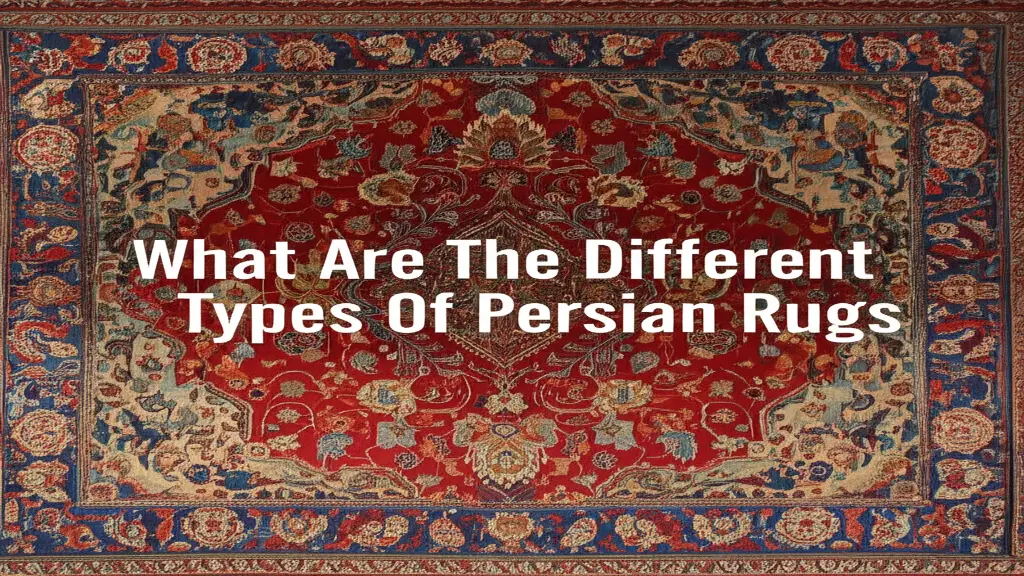
The Complete Guide to Different Types of Persian Rugs
Persian rugs are more than just floor coverings—they represent centuries of artistic tradition, cultural heritage, and unmatched craftsmanship. These exquisite textiles have adorned homes across the world for generations, each telling a unique story through intricate patterns and vivid colors.
If you’re considering investing in a Persian rug or simply want to expand your knowledge about these timeless pieces, understanding the different types of Persian rugs is essential.
From the geometric patterns of Heriz to the delicate flora of Isfahan, each style offers distinct characteristics that appeal to different tastes and complement various interior designs.
Key Takeaways:
- Persian rugs originate from Iran (formerly Persia) and feature distinct regional designs
- Quality Persian rugs are handwoven using natural materials like wool and silk
- Different types include Tabriz, Heriz, Isfahan, Kashan, Qom, and many more
- Each type has unique patterns, color palettes, and weaving techniques
- Authentic Persian rugs appreciate in value over time, making them investment pieces
What Are Persian Rugs?
Persian rugs are handwoven floor coverings that originate from Iran (formerly known as Persia). These rugs are distinguished by their intricate designs, superior craftsmanship, and use of high-quality natural materials. What makes Persian rugs truly special is that each type reflects the distinct cultural and artistic traditions of the specific region where it was created, resulting in a remarkable diversity of styles and patterns.
History and Heritage of Persian Rugs
The history of Persian rugs dates back over 2,500 years, making them one of the oldest forms of art still being produced today. The tradition of rug weaving in Persia began with nomadic tribes who needed portable floor coverings that could provide warmth and comfort. Over centuries, this practical craft evolved into a sophisticated art form that reflects the rich cultural heritage of the region.
The golden age of Persian rug making occurred during the Safavid Dynasty (1501-1736), when royal workshops were established and designs became increasingly elaborate. During this period, rug weaving transformed from a nomadic craft into a fine art supported by the royal court. These rugs were not just functional items but symbols of wealth, status, and artistic achievement.
Persian rugs gained international recognition during the 19th century when European traders began importing them to Western markets. Today, they continue to be prized possessions in homes worldwide, with traditional techniques being passed down through generations of skilled artisans.
The UNESCO has recognized traditional Persian carpet weaving as an “intangible cultural heritage of humanity,” highlighting its cultural significance beyond mere decorative value. Each rug represents countless hours of labor—some taking years to complete—and embodies the history and artistic traditions of Iran.
Materials and Construction of Persian Rugs
Materials Used
Persian rugs are primarily made from natural materials, with wool being the most common fiber used in both the foundation and pile. The quality of materials used significantly impacts the rug’s appearance, durability, and value.
Common materials include:
- Wool: The most traditional material, prized for its durability and ability to hold dye well. Highland or “kork” wool from sheep that graze in mountainous regions is especially valued for its high lanolin content and luster.
- Silk: Used in the finest and most intricate rugs, silk creates a luminous sheen and allows for extremely detailed patterns. Silk rugs are typically displayed as wall hangings or used in low-traffic areas due to their delicate nature.
- Cotton: Often used for the foundation (warp and weft) of rugs because of its strength and dimensional stability, helping the rug maintain its shape over time.
- Natural dyes: Traditional Persian rugs use vegetable and mineral-based dyes created from plants like indigo, madder root, walnut husks, and pomegranate.
Construction Techniques
The construction of Persian rugs involves complex techniques that have been perfected over centuries:
- Knotting: Persian rugs typically use the asymmetrical “Persian” or “Senneh” knot, which allows for more intricate designs and tighter weaving compared to the symmetrical “Turkish” knot.
- Knot density: Measured in knots per square inch (KPSI), this indicates the fineness and quality of a rug. Fine Persian rugs can have anywhere from 120 to over 800 KPSI.
- Pile height: This varies by region and style, with some rugs featuring a short, dense pile and others having a medium to longer pile.
- Foundation: The vertical (warp) and horizontal (weft) threads that form the foundation of the rug are typically cotton or wool.
The creation of a high-quality Persian rug is incredibly labor-intensive. A single 9x12 foot rug with a density of 300 KPSI can contain over 4 million knots and take a skilled weaver more than a year to complete. This intensive handcrafting process contributes to their value and explains why authentic Persian rugs are considered investment pieces that appreciate in value over time.
Major Types of Persian Rugs by Region
Persian rugs are typically categorized by the city, village, or tribal region where they originated. Each area has developed its own distinctive style, pattern, and weaving technique over centuries. Here’s an exploration of the major regional types:
Tabriz Rugs
Originating from the northwestern city of Tabriz, these rugs are among the most diverse in design and are known for their exceptional craftsmanship.
Characteristics:
- Fine, precise weaving with high knot density
- Elaborate medallion patterns with intricate corner designs
- Subdued color palette featuring ivory, burgundy, and navy
- Often incorporate curved lines and floral motifs
- Range from workshop pieces to village productions
Tabriz has been a major rug production center for centuries, and its weavers are known for their versatility in creating both traditional Persian designs and adapting to market demands. The city’s proximity to Turkey and the Caucasus has influenced its designs, resulting in a blend of styles that appeals to many collectors.
Isfahan (Esfahan) Rugs
Named after one of Iran’s most beautiful cities, Isfahan rugs represent the height of Persian rug artistry and elegance.
Characteristics:
- Extremely fine weaving with silk often incorporated into wool pile
- Intricate floral patterns with central medallions
- Sophisticated color palette with ivory, blue, and salmon pink
- Elaborate borders with multiple guard bands
- High knot count, often exceeding 500 KPSI
Isfahan rugs are considered among the most formal and refined Persian rugs, often featuring Shah Abbasi floral designs—a trademark motif featuring a stylized flower with a central rosette surrounded by curved leaves. These rugs frequently incorporate silk highlights that catch the light and add dimensional brilliance to the design.
Heriz Rugs
From the Heriz district near Tabriz in northwest Iran, these rugs are known for their bold geometric patterns and remarkable durability.
Characteristics:
- Distinctive large geometric medallions
- Angular, rectilinear patterns rather than flowing curves
- Bold, vibrant colors with deep reds and blues
- Sturdy construction with thick pile
- Lower knot density compared to city rugs
Heriz rugs are prized for their sturdiness and distinctive appearance. The bold geometric designs stand in stark contrast to the floral patterns common in many other Persian styles. The copper deposits in the drinking water of the Heriz region are said to contribute to the wool’s durability and the distinctive richness of the dyed colors. These rugs are excellent choices for high-traffic areas and can withstand generations of use while maintaining their beauty.
Kashan Rugs
From the ancient city of Kashan in central Iran, these rugs are celebrated for their refined floral patterns and excellent quality.
Characteristics:
- Central medallion designs with corner spandrels
- Fine, detailed floral patterns
- Rich color palette dominated by navy, red, and ivory
- Excellent wool quality with a soft, luxurious feel
- Consistent high-quality craftsmanship
Kashan has been a center for textile arts since the Safavid period. The weavers typically use the Persian knot to create dense, durable carpets with a relatively short pile. Kashan rugs are considered excellent investment pieces due to their consistent quality and timeless appeal.
Qom (Qum) Rugs
A relatively newer production center, Qom emerged as a rug-making city only in the 20th century but quickly established a reputation for extraordinary quality.
Characteristics:
- Often made with silk pile or silk highlights
- Exceptionally high knot density
- Intricate, detailed designs that can include pictorial elements
- Luminous appearance with a distinctive sheen
- Typically smaller in size compared to other Persian rugs
Despite their short history, Qom rugs are among the most sought-after Persian rugs today. Their fine weaving and silk content make them luxurious art pieces, often displayed as wall hangings rather than floor coverings. The weavers of Qom have innovated within the Persian tradition, creating pieces that appeal to contemporary collectors while maintaining traditional craftsmanship.
Tribal and Nomadic Persian Rugs
While city and village rugs follow established patterns and techniques, tribal rugs reflect the traditions of Iran’s nomadic peoples. These rugs have a distinctive character that sets them apart from their urban counterparts.
Gabbeh Rugs
Gabbeh rugs are produced by the nomadic Qashqai tribes of southwestern Iran and are known for their primitive, abstract designs.
Characteristics:
- Thick, shaggy pile (up to 2cm)
- Simple, abstract designs with minimal details
- Bold, vibrant colors derived from natural dyes
- Often feature animal motifs or geometric shapes
- Looser weave with lower knot density
Gabbeh rugs have gained popularity in contemporary interior design for their modernist aesthetic despite their ancient origins. The name “Gabbeh” means “unclipped” or “natural” in the Farsi language, reflecting their rustic appearance. Unlike formal city rugs, Gabbeh designs are often improvised rather than following a predetermined pattern, giving each piece a unique, spontaneous quality.
Kurdish Rugs
Created by Kurdish weavers in western Iran, these rugs feature bold patterns and vibrant colors.
Characteristics:
- Robust construction with thick pile
- Bold geometric designs and stylized floral motifs
- Vibrant color palette with contrasting hues
- Often asymmetrical designs, reflecting their tribal origin
- Excellent durability suitable for high-traffic areas
Kurdish rugs are known for their sturdy construction and distinctive use of color. Kurdish weavers often incorporate symbols that reflect their cultural identity and beliefs, including talismanic designs meant to bring protection or good fortune to the rug’s owner.
Bakhtiari Rugs
Woven by the Bakhtiari tribes of the Zagros Mountains, these rugs feature distinctive garden design patterns.
Characteristics:
- Famous “Kheshti” (garden) design divided into panels
- Vibrant colors with rich reds, blues, and yellows
- Sturdy construction with high-quality mountain wool
- Geometric interpretation of floral and garden motifs
- Medium to high pile with good durability
The signature garden design of Bakhtiari rugs—a series of diamond-shaped or rectangular panels each containing a unique floral pattern—is said to reflect the fertile gardens of Persia as seen from above. This distinctive compartmentalized layout sets Bakhtiari rugs apart from other Persian styles and makes them immediately recognizable to collectors.
Baluchi Rugs
Created by the Baluchi nomads of eastern Iran and western Afghanistan, these rugs are known for their deep, somber colors and geometric designs.
Characteristics:
- Rich, dark colors dominated by browns, deep reds, and navy blues
- Prayer rug designs are common
- Geometric patterns with tribal motifs
- Predominant use of wool with occasional camel hair mixed in
- Often smaller in size due to the nomadic lifestyle of weavers
Baluchi rugs feature designs passed down through generations, often including protective symbols and motifs with cultural significance. Their deep, saturated colors and meditation-friendly designs make them popular choices for creating warm, intimate spaces within modern homes.
Specialty Persian Rug Types
Beyond the major regional categories, several specialty types of Persian rugs deserve recognition for their unique characteristics.
Kilim Rugs
Unlike knotted pile rugs, kilims are flat-woven textiles with no pile, creating a distinct appearance and texture.
Characteristics:
- Flat-woven technique rather than knotted pile
- Reversible design visible on both sides
- Geometric patterns with bold colors
- Lightweight and easier to transport than pile rugs
- Often feature slits where colors meet
The fundamental difference between Persian rugs and kilim rugs lies in their construction technique. While traditional Persian rugs are created by knotting individual pieces of yarn around warp threads to create pile, kilims use a flatweave technique where weft threads are tightly woven through warp threads to create a flat surface. This different construction method results in distinctly different appearances and uses.
Pictorial Rugs
These unique rugs depict scenes from Persian literature, history, or daily life.
Characteristics:
- Narrative scenes featuring people, animals, or historical events
- Extremely fine weaving to achieve detailed imagery
- Often created as wall hangings rather than floor coverings
- Showcase the weaver’s artistic skill and storytelling ability
- Frequently made in Tabriz, Isfahan, and Qom
Pictorial rugs represent the highest level of weaving artistry, with master weavers translating complex scenes into textile form. These pieces blur the line between functional rugs and fine art, with some examples hanging in museums around the world.
Prayer Rugs
Designed specifically for Islamic prayer, these rugs feature distinctive architectural elements.
Characteristics:
- Mihrab (prayer niche) design pointing toward Mecca
- Typically smaller size for individual use (approximately 3x5 feet)
- Often include representations of mosque lamps or columns
- May feature geometric patterns avoiding human or animal representations
- Special attention to cleanliness in construction
Prayer rugs serve both practical and spiritual purposes in Islamic culture. The mihrab design helps orientate the worshipper toward Mecca during prayer, while the rug provides a clean surface for prostration. Even when used decoratively by non-Muslims, these rugs maintain their distinctive and recognizable design elements.
How to Identify Persian Rugs
Learning to identify different types of Persian rugs takes time and experience, but here are key factors to consider:
Pattern Recognition
Each region has distinctive design elements that can help identify its origin:
- Medallion designs: Central medallions with corner spandrels are common in Isfahan, Kashan, and Tabriz rugs
- All-over patterns: Herati or Mahi (fish) patterns covering the entire field appear in many Mashad rugs
- Geometric vs. curvilinear: Tribal rugs tend toward geometric designs, while city rugs feature more curvilinear patterns
- Border complexity: The number and design of borders can indicate the rug’s origin and quality
Color Analysis
Colors provide important clues to a rug’s origin:
- Tabriz: Soft palette with ivory, burgundy, and navy
- Isfahan: Delicate blues, ivories, and salmon pinks
- Heriz: Bold reds and blues with contrasting ivory
- Kashan: Rich navy, red, and ivory combinations
- Tribal rugs: Earth tones with vibrant accents
Construction Details
Examining the back of a rug reveals much about its construction:
- Knot type: Persian (asymmetrical) knots vs. Turkish (symmetrical) knots
- Knot density: Higher in fine city rugs like Isfahan and Qom, lower in tribal rugs
- Foundation materials: Cotton warps and wefts in city rugs, wool in tribal pieces
- Selvedge construction: How the edges are finished can indicate region
Materials Assessment
Feel the pile and examine the materials:
- Wool quality: Fine, lustrous wool in high-quality rugs vs. coarser wool in tribal pieces
- Silk content: Present in luxury rugs from Isfahan and Qom
- Dye quality: Natural dyes create harmonious colors that improve with age
For a more detailed guide on identifying antique Persian rugs, you can refer to this comprehensive identification guide.
Caring for Persian Rugs
Proper care is essential to preserve the beauty and value of Persian rugs for generations:
Regular Maintenance
- Vacuum regularly using a suction-only vacuum (avoid beater bars)
- Rotate rugs periodically to ensure even wear
- Address spills immediately by blotting (never rubbing)
- Keep out of direct sunlight to prevent fading
- Use proper rug pads to prevent slipping and provide cushioning
Professional Cleaning
- Have rugs professionally cleaned every 3-5 years
- Choose specialists experienced with Persian rugs
- Traditional washing methods are preferable to chemical cleaning
- Consider specialized cleaning for silk rugs or antique pieces
Storage Considerations
- Always clean rugs before storing
- Roll (never fold) rugs with pile facing inward
- Wrap in breathable materials (not plastic)
- Store in climate-controlled environments
- Periodically unroll and air out stored rugs
Proper care not only maintains the rug’s appearance but also preserves its value. Persian rugs that are well-maintained can last for generations and often increase in value over time, making them both beautiful home furnishings and worthwhile investments.
Integrating Persian Rugs in Interior Design
Persian rugs add warmth, character, and cultural depth to any interior space. Here’s how to integrate these magnificent textiles into various design styles:
Complementing Different Design Styles
- Traditional interiors: Persian rugs are natural companions to traditional furnishings, especially antique furniture. Formal rugs like Isfahan or Kashan complement these spaces beautifully.
- Modern minimalism: The organic patterns of tribal rugs like Gabbeh create striking contrast in minimalist spaces with their bold simplicity.
- Eclectic design: Mix Persian rugs with diverse furniture styles to create a collected, worldly aesthetic.
- Transitional spaces: Heriz or Tabriz rugs with their timeless appeal bridge traditional and contemporary elements.
Size and Placement Considerations
- In living rooms, ensure the rug is large enough that at least the front legs of all furniture sit on it
- In dining areas, choose a rug at least 24 inches wider than the table on all sides
- For bedrooms, place large rugs under the bed extending at least 18-24 inches on all sides, or use smaller rugs as accents
- Consider using rug pads that are safe for hardwood floors to prevent scratching and slipping
Color Coordination
- Use the rug’s color palette as inspiration for the room’s color scheme
- Pull accent colors from the rug for pillows, artwork, and accessories
- For neutral rooms, let a vibrant Persian rug serve as the focal point
- In colorful rooms, consider more subdued rug patterns to maintain balance
Persian rugs can transform ordinary rooms into extraordinary spaces with their rich history and visual interest. Their timeless appeal transcends trends, making them worthwhile investments for any thoughtfully designed home.
FAQ About Persian Rugs
How many types of Persian rugs are there?
There are over 50 distinct types of Persian rugs, each named after the city, village, or tribal region where they originated. Major categories include Tabriz, Isfahan, Heriz, Kashan, Qom, Nain, Kerman, Mashad, and various tribal rugs like Gabbeh, Bakhtiari, and Kurdish.
How do you identify a Persian rug?
Persian rugs can be identified by examining their knot structure (typically asymmetrical Persian knots), design patterns specific to certain regions, color palettes, materials, and construction quality. The pattern on the back of the rug will be clearly visible in authentic Persian rugs due to hand-knotting.
What is the difference between Persian and kilim rugs?
Persian rugs typically have a pile created by knotting individual pieces of yarn around warp threads, while kilim rugs are flat-woven with no pile. Kilims are lighter, reversible, and often feature geometric designs with distinctive slits where colors meet in the pattern.
What is another name for Persian rug?
Persian rugs are sometimes called Iranian carpets (reflecting the modern name of the country). They’re also occasionally grouped under the broader category of “Oriental rugs,” though this term includes carpets from other countries like Turkey, China, and India as well.
What makes Persian rugs so valuable?
Persian rugs are valuable due to their hand-knotted construction (often taking months or years to complete), use of high-quality natural materials like wool and silk, artistic designs developed over centuries, cultural significance, and durability that allows them to last for generations while improving with age.
How long do Persian rugs last?
With proper care, Persian rugs can last for generations—often 100 years or more. Many antique Persian rugs over a century old still maintain their structural integrity and beauty, and some even gain value over time as they develop a desirable patina.
Are Persian rugs a good investment?
High-quality Persian rugs, especially those from renowned weaving centers, can be excellent investments. They typically maintain or increase their value over time, particularly as traditional hand-weaving becomes increasingly rare. The best investment pieces combine fine craftsmanship, natural materials, and timeless designs.
Final Words
Persian rugs represent one of the world’s oldest continuous art forms, combining practical utility with extraordinary beauty. Understanding the different types of Persian rugs enhances appreciation for these masterpieces of textile art and helps collectors and homeowners make informed choices. Whether you’re drawn to the geometric boldness of Heriz, the floral elegance of Isfahan, or the primitive charm of Gabbeh, there’s a Persian rug style to complement any interior and tell your unique story.
When selecting a Persian rug, consider not just its aesthetic appeal but also its craftsmanship, materials, and authenticity. A well-chosen Persian rug is more than a floor covering—it’s an investment in artisanal tradition, a conversation piece that connects your home to centuries of cultural heritage, and an heirloom that can be passed down through generations. As you explore the rich world of Persian rugs, you’ll discover that each piece offers its own narrative, woven knot by knot by skilled artisans who have preserved this remarkable art form across the centuries.


